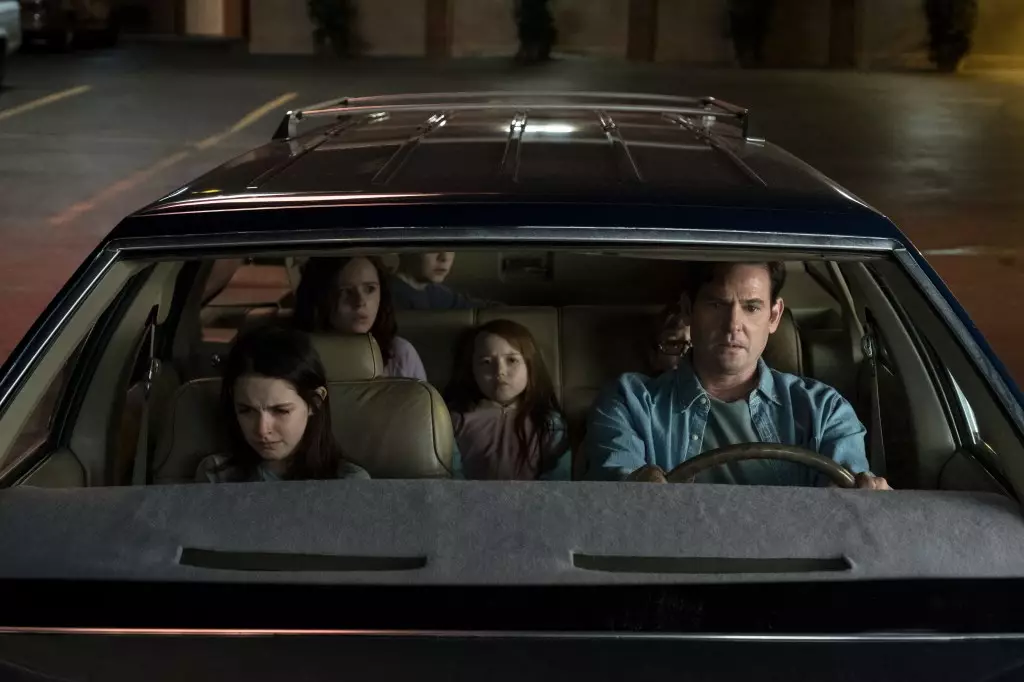Mike Flanagan isn’t just a director; he’s a profoundly sensitive artist whose works are informed by his intimate experiences with grief and loss. At the inaugural SXSW London, he embraced vulnerability when discussing how the tragedies in his life shaped his creative endeavors. His acclaimed series, The Haunting of Hill House, arose from the depths of personal despair following a suicide in his family. Flanagan candidly shared that the character of Nell Crain’s suicide was not merely a plot point but a manifestation of his struggle, a cathartic exorcism of his own debilitating emotions. Through horror, Flanagan does not merely entertain; he offers a therapeutic avenue for both himself and those who may resonate with his narratives.
As creative minds strive to find meaning in chaos and loss, it becomes essential to recognize the courageous steps taken by individuals like Flanagan. His admission that “there are images in that that are dreams and nightmares I had during that time” speaks to the rawness with which he approaches storytelling. He has taken what could be labeled exclusively as horror, a genre often dismissed or marginalized, and woven personal trauma into a tapestry of narrative complexity. In a world where grief often feels isolating, Flanagan’s work offers a lifeline to those navigating similar waters.
The Dual Nature of Horror and Healing
Flanagan’s exploration of dark themes doesn’t stop at Hill House; it threads through other significant projects, notably Doctor Sleep and Midnight Mass. The former, a sequel to the iconic The Shining, became more than just a cinematic venture for Flanagan. It symbolized his personal battle against alcoholism, serving as an anchor in turbulent waters. The creators in the horror genre often grapple with personal demons, and it’s striking how intimately his films reflect his internal conflicts.
In the arts, particularly in genres like horror, it’s easier to fall into the trap of sensationalizing struggles rather than illuminating them. Yet Flanagan manages to transcend this pitfall. He understands that the horror genre possesses a unique capacity to provoke emotional engagement, which is often sidelined when discussing serious themes. True horror can resonate on deeply personal levels; if executed correctly, it can lead to healing and understanding, both for the creator and the viewer.
The Persistent Stigma Surrounding Horror
Despite his successes, Flanagan noted an insidious bias against horror that reverberates through both the industry and audiences alike. Such bias frames horror as a lesser form of storytelling, relegated to jump scares and shallow plot lines. Flanagan pointed out how quickly public perception shifts when an award-winning horror film enters the spotlight, only to revert back to misconceptions about the genre thereafter. This cyclical pattern illustrates a larger issue at play—one that constantly undermines the profound narratives that can emerge from horror.
By referencing Jordan Peele’s Oscar-winning work, Flanagan underlines the fleeting respect awarded to horror that oscillates with each critical success. It’s a comment on the inconsistency of artistic appreciation; audiences often remain surprised that horror can encapsulate complex themes of tragedy and human emotion. A patently simplistic view dismisses horror’s latent potential to explore intricate human experiences, reducing its narrative richness to mere shocks and frights.
The Heart of Storytelling: Listening to Voices
Flanagan’s relationship with Stephen King offers another lens through which to explore the art of storytelling within horror. Describing King as a “gooey-hearted, lovely humanist,” Flanagan asserts that King’s work transcends mere horror tropes. King’s narratives delve into emotion and connections, intertwining horror with the warmth of human experience. Flanagan’s understanding that “It is not about a shapeshifting clown, it’s about kids and friendship” displays a critical lens that reveals how horror can deeply reflect human insights.
Through his advocacy for monologues, Flanagan voices a commitment to preserving the essence of storytelling. Monologues are powerful, allowing for emotional truths that can spark profound connections. In the age of quick consumption fostered by streaming platforms, the demand for brevity often dilutes heartfelt expression, but Flanagan defends the potency of lengthy, introspective dialogue. Such a viewpoint challenges both creators and audiences to value depth in storytelling, particularly in a genre that can all too frequently be relegated to entertainment devoid of substance.
Mike Flanagan’s journey illustrates the complexities inherent in horror as both a reflection of personal anguish and a broader commentary on society’s response to it. It propels us to reconsider how we interact with narratives built around fear, grief, and ultimately, the human experience itself. In doing so, it’s essential to celebrate artists who dare to pour themselves into their craft and harness the transformative power of storytelling despite societal biases.

